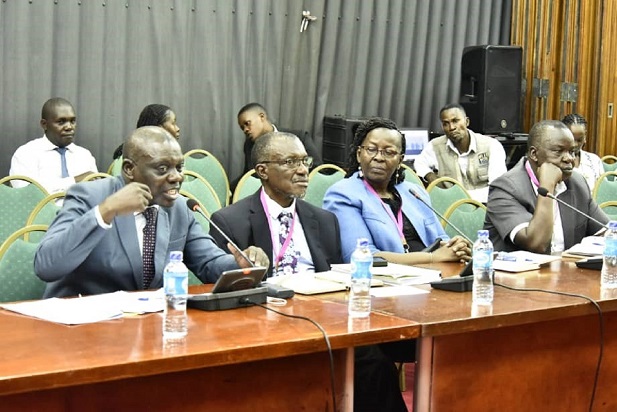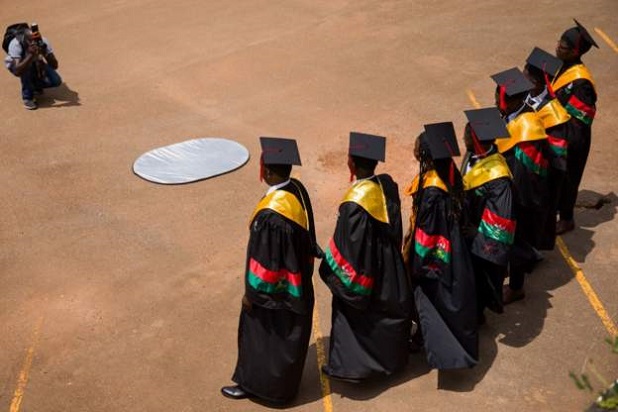Kampala Parents’ School pupils are active in co-curricular activities. P.1 pupils are likely to increase this year
With a year of school closures and the current ban on reopening of nursery and other pre-primary schools, Uganda is looking at the possibility of having close to four million children fighting for space in Primary One.
The scary scenario has already been observed by several district education officers, headteachers, and other educationists who are projecting that when primary one opens, there is a high possibility of seeing children of age five, six, and seven going to the same class.
Fredrick Kiyingi, Wakiso District Education Officer-DEO who also doubles as the chairperson of DEO’s association, says that as officers at the district level they have already sensed the development.
For a child to be enrolled in primary one must be at least six years old. Going by the available statistics from the Uganda Bureau of Statistics-UBOS, there were 1.2 million children in 2020 who had reached the said age and were expected to have joined primary school before the closure.
However, before this group of learners is promoted to another class, UBOS data indicates that another 1.27 million children have already turned six this year, 2021, which makes them eligible for enrollment in primary one.

But, Kiyingi adds that with the closure of nursery schools, parents will certainly send their five-year-old children to primary one -the total number of five-year-old children estimated to be 1.3 million.
“With nursery schools still closed, there will not be control in who goes to primary one that is a fact, expect to see children who were in middle and top classes also being enrolled in primary one,” Kiyingi emphasized.
Moses Olwit, Alebtong District Education Officer, also anticipates an increase in enrollment in the said class. He, however, worries about how the situation will be handled given the fact that schools (both private and public) are not prepared to handle the expected incoming numbers.
Jane Kyakuwa, the headteacher of Kitante primary school, notes that before closure they had 580 pupils in primary one. She adds that even before the official reopening dates for primary one class, parents of learners aged five and six are already flocking the school seeking admission.
“The increase in a number of primary one learners is not surprising, the school closure has taken a year, and during that period many children have turned six and therefore eligible to join primary. many parents are already coming here seeking admission,” said Kyakuwa.
Kyakuwa was, however, left worrying about where the new learners will be placed. She notes that with the numbers doubling, schools will need extra space which is not available.
“Currently we have four streams of primary one each hosting 120 learners. These are already many given the recommended number of pupils that can be in one class (which is 53),” she notes.
She adds that the situation will also be worsened by the social distancing guidelines. For Kintante Primary School, she notes that the policy will be on first come first serve putting the ceiling at most at 600 pupils. This means that learners who will report late whether new or old will not be enrolled.
Elizabeth Kisakye, Early Childhood Development Expert notes that besides space, there is another critical factor of the ability of teachers to handle primary class as schools reopen.
Her argument is based on the fact that among those who will enroll, there will be a few who have got some competencies of reading and writing and others who are completely green. Kisakye says although teachers are trained to handle individual differences among learners, it will be a tough task.
Looking at the same challenge, Rogers Nambuli, headteacher Nakasero primary school, notes that they have already laid a plan which will require them to stream the primary one class basing on their competence.
Nambuli explains that learners with similar educational needs will be put together as it was done before pre-primary schools were introduced in Uganda.
Ismael Mulindwa, Director Basic and Secondary Education, says that the ministry has already examined the likely challenge and advised that schools should not enroll learners who had not been to the same class before the closure of schools. this means that schools will be admitting only learners with seven years for the shortened learning period.
Mulindwa notes that although many parents are desperately waiting for their learners to go to school, those with learners who were in pre-schools plus those who had not enrolled in primary one should rather wait for the new academic year which opens in august so that they don’t congest primary one class.
However, Kiyingi and Olwit argue that the ministry of education’s recommendation will be difficult to enforce looking at the current needs and situation among parents. The District Education Officers instead advise that the ministry should pro-actively plan.
-URN






